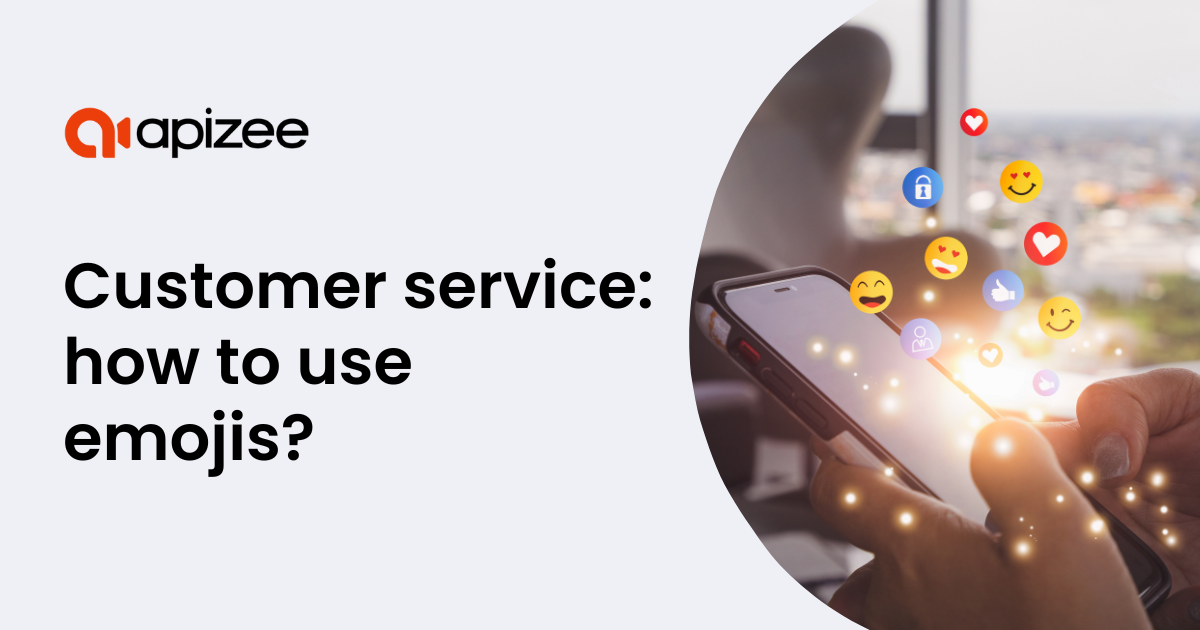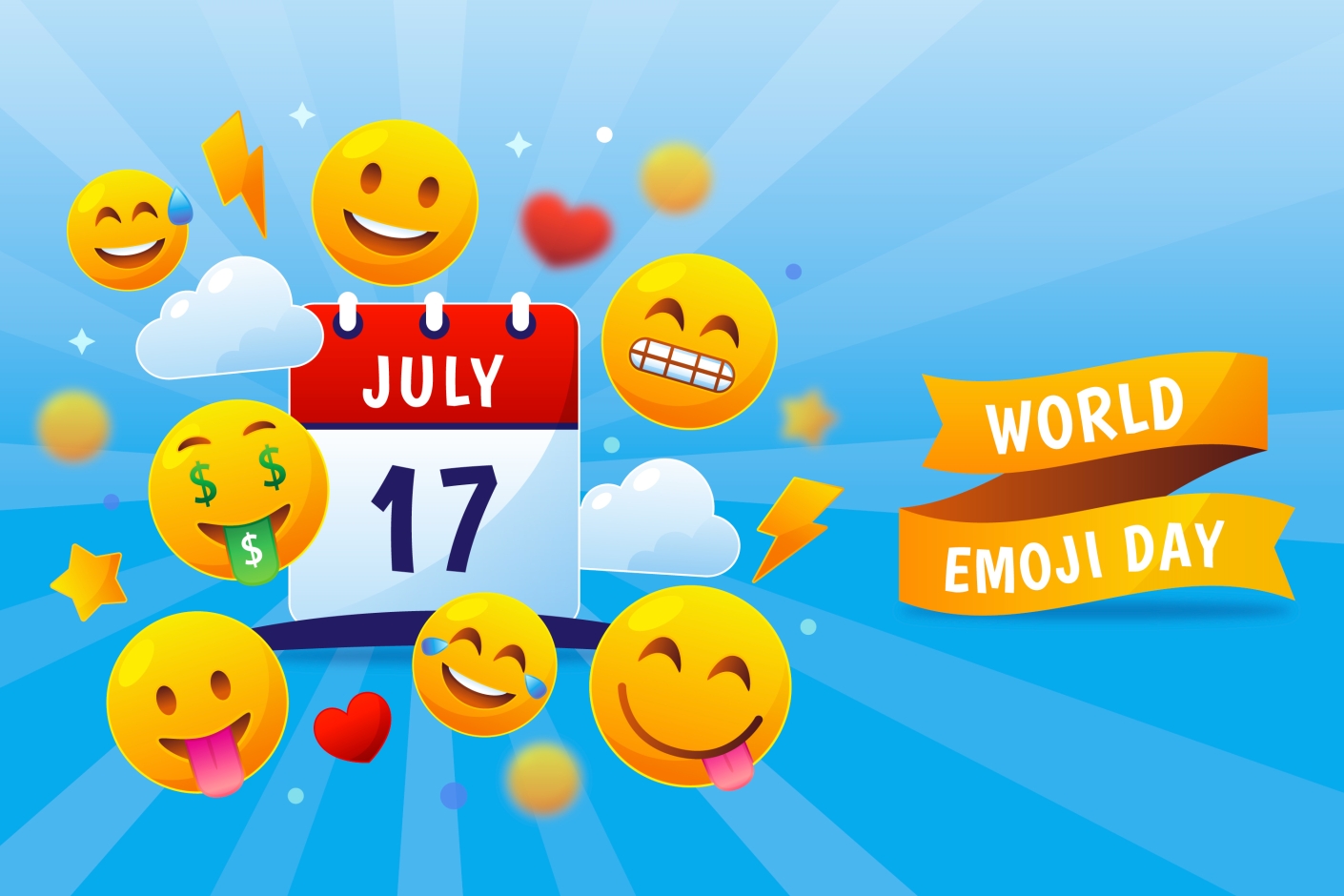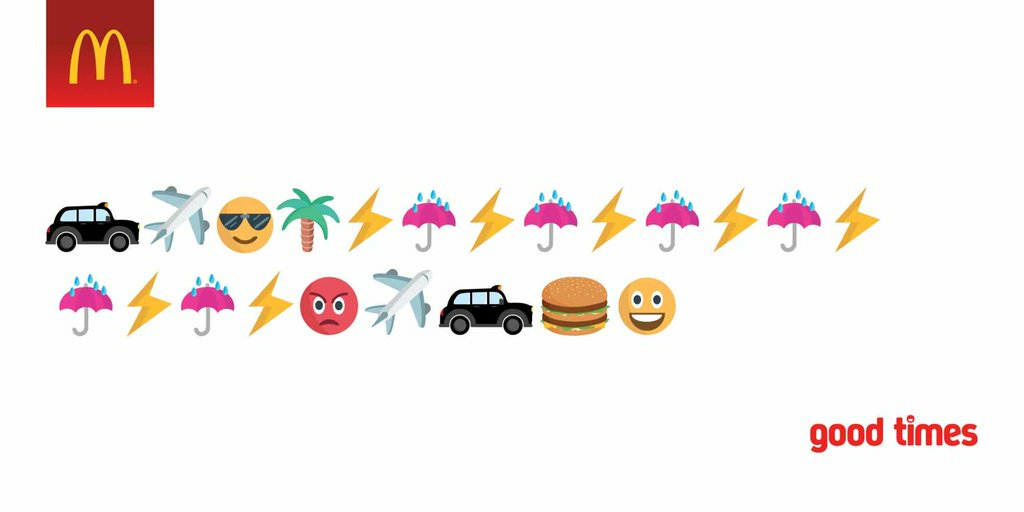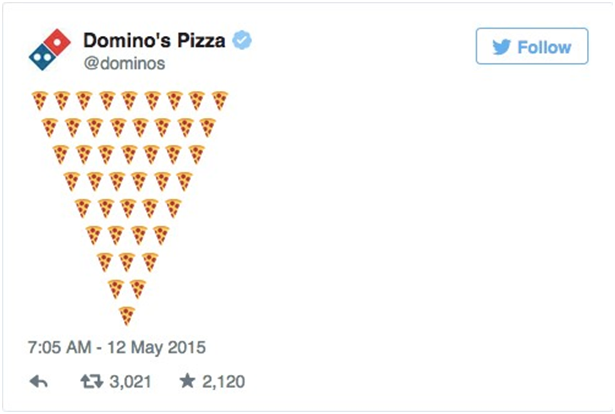Emojis in customer service: a way to humanize interactions



Ever used an emoji before? Of course, who hasn't!
These colorful little icons are everywhere on our screens, changing the way we communicate.
Frequently used in our personal conversations with family and friends, their use has gradually spread to the professional world. Brands are continuously looking for ways to make customer interactions more personal and human. That's why the use of emojis in customer service is gaining in popularity.
But it raises a few questions. Is it always a good idea to use them? How can they be integrated efficiently, with no risk of misunderstanding? And can emojis really make a difference to customer satisfaction?
Let's find out about the importance of emojis in communication, the benefits and risks of using them in business, and best practices for customer service.
Who could have thought that emojis would become such an essential part of our daily communication? They have become a communication tool in their own right. Let's find out why:
The first reason is that, when writing, it's hard to convey the tone you'd use if the person were right in front of you. That's where emojis come in. They bring that visual touch that makes all the difference, clarifying the tone and intention behind our words. An Adobe study reveals that 73% of Americans think people who use emoji are friendlier, funnier and cooler.
Example: saying “Ok” can sound cold or neutral. If you add a “😊” smile emoji, the message takes on a different twist, becoming friendly and enthusiastic: “Ok 😊”.
Another advantage of emojis is their universality. Whatever your language, a heart emoji “❤️” or hand sign “👋” will be understood everywhere and by everyone.
Emojis are also used for efficiency, because they're simple to use and understand. A single emoji can be enough to convey a message.
Example: you can use a thumbs-up emoji “👍” to express your agreement, or an applause emoji “👏” to congratulate someone.
Did you know? There is a World Emoji Day. Launched in 2014, this day has become an annual event to celebrate these little icons, essential to our digital exchanges. Fun fact, it's celebrated on July 17, because that's the date that appears on the calendar emoji.

Emojis finally have a place in the business environment, including in customer service. More and more companies are using them in their internal and external communications.
Let's find out why using them can be useful:
Not all emojis are suitable for customer service. It's important to choose those that convey a clear message and will be widely understood. Here are some suggestions for emojis suitable for customer service:
When to use it: To soften a message, express joy, start or end a conversation on a positive note.
Example: “Hello {First name}, how can I help you? 😊”
When to use it: To confirm an action or show that you've understood and approved the customer's request.
Example: “Your order has been registered 👍”
When to use it: To confirm that a task has been completed or a request has been processed successfully.
Example: “Your refund has been processed and will be effective within 3 working days ✅”
When to use it: For less formal exchanges, to reassure, or to play down a situation.
Example: “We'll take care of everything, don't worry 😉”
When to use it: To suggest an idea or solution.
Example: “I may have a solution for you 💡 Have you tried...”
When to use it: To indicate a deadline or to remind the customer of an upcoming deadline.
Example: “We are processing your request, it may take up to 24 hours 🕐”
When to use it: To end a conversation on a light, positive note.
Example: “Have a nice day ☀️”
When to use it: To express a strong positive emotion, especially when thanking or getting positive customer feedback. Note: use with caution, ideal for brands with highly emotional communications.
Example: “We're delighted you liked our service ❤️”
When to use it: To indicate that a technical problem is being resolved.
Example: “Our technical team is currently working on the problem 🔧”
When to use it: To inform a customer of a promotion, gift or special offer.
Example: “To thank you, here's a little gift from us 🎁”
It's important to note that the use of emojis must be adapted to your audience and the context of the interaction. Consistent and thoughtful use of emojis can greatly improve the quality of your exchanges with customers, making them warmer and more expressive.
Using emojis in your interactions with customers can really benefit you, by making your brand more accessible. There are, however, situations in which emojis should not be used. Here are 3 of them:
❌ Formal situations: in a formal setting, emojis can be confusing. For example, can a thumbs-up 👍 be considered contractual validation? This type of questioning highlights the limits of their use.
❌ Confusing symbols: some emojis can be interpreted differently depending on culture or context. For example, the 🙏 folded hands emoji is regularly used to say “thank you” or “please”. But for some people, it represents a “high five” while for other cultures, it may represent a prayer.
❌ Overuse: using too many emojis can give a negative, unprofessional image of your brand. It can also blur the content of the message. For example, a sentence such as “Hello 👋, we received your ✉️ and will 📞 you soon. Please give us some ⏳” can quickly become an exercise in decoding for the receiver.
As mentioned above, the use of emojis in customer service requires a thoughtful approach to ensure personalized, professional customer interactions. Here are a few best practices:
Before you start, evaluate how emojis fit in with your industry and brand image. Ask yourself: does the use of emojis contribute to or detract from your brand image? But keep in mind that your customer base is heterogeneous, which means that your customers may have different views on emojis.
Give clear guidelines on the use of emojis and train your teams accordingly. This will ensure consistency in customer interactions and avoid inappropriate uses.
Avoid excessive use of emojis, especially in complex situations. In serious conversations or when dealing with difficult customers, it's best to refrain from using emojis until the problem has been resolved.
Pay attention to the way your customers communicate. If they use emojis, don't hesitate to do the same, especially in positive contexts. This will show your adaptability and avoid appearing cold or distant.
Ask your customers for their opinions on the use of emojis in your interactions. You can gather testimonials and comments to refine your approach. This will enable you to adjust your communication style according to your customers' preferences.
Don't forget that emojis are just one tool among many for humanizing your interactions. While they can add proximity to your customers, they can never replace face-to-face communication. For complex situations requiring empathy, or to create a more personal connection with your customers, video chat can be an excellent solution to consider in your customer service.
Follow these best practices, and you'll be able to integrate emojis wisely into your customer service, boosting the quality of your interactions while maintaining an appropriate level of professionalism.
Discover how Apizee's visual engagement solutions can help you humanize and personalize your customer interactions.
Contact usMany brands have already adopted emojis in their communications. Here are three examples of how to use them.
Emojis are powerful visual assets in advertising. They can convey emotions, make a message unforgettable and overcome language barriers. When used properly, they can make a real difference to the impact of a campaign. Here are two campaign examples:
McDonald's
McDonald's UK has launched an innovative campaign featuring emojis. The brand created several advertising billboards entirely composed of emojis, with the slogan “Good Times”. Each one shows that problems such as bad weather or traffic jams can be solved with the joy of eating at McDonald's. The brand has successfully capitalized on the emoji trend to speak directly to consumers with this new communication trend.

Pepsi
With the “PepsiMoji” campaign, the brand created over 1,500 personalized emojis, printed on its cans and bottles. The aim was to enable consumers to express their emotions through these emojis, while sharing their love for Pepsi. A successful gamble to make the experience more interactive and visually appealing.

On social networks, emojis enable brands to add a touch of fun, express their personality and boost engagement. They make posts more attractive and facilitate interaction with customers. Here are a few concrete examples:
WWF
WWF (World Wildlife Fund) launched a campaign entitled #EndangeredEmoji. The organization used 17 endangered animal emojis to raise awareness of the need to protect endangered species. Each time a user tweeted one of these emojis, they were invited to make a donation. Through this campaign, WWF was able to exploit the popularity of emojis to draw attention to an important cause, while making donation accessible and fun.

Domino's Pizza
With its “Tweet-A-Pizza” campaign, Domino's enabled its customers to order a pizza simply by tweeting the emoji “🍕”. Thanks to the creative use of emojis, this campaign generated a huge buzz and reinforced the brand's image as an innovative company close to its community.

Hashmojis
Hashmojis” enable a brand to design a new personalized emoji that appears on X (formerly Twitter) every time a user posts a specific hashtag. Many brands use hashmojis to stand out at special events or product launches. Apple, for example, activates its hashmoji for every new product launch. So when a user posts a message accompanied by the hashtag #AppleEvent, the brand's logo appears.

Emojis can also play a role in customer service. By integrating them into exchanges with customers, companies can make their communications more human, dynamic and engaging. Here are two examples:
Plezi
Plezi, a French B2B marketing automation software, uses emojis in its help center to make articles more engaging and clear. These little icons make instructions clearer and more pleasant to read. Emojis are used to illustrate steps, highlight key points or enhance comprehension.

Boulanger
Boulanger, a specialist in home appliances and multimedia equipment in France, has integrated emojis into its chatbot to make interactions with customers smoother and friendlier. The chatbot uses these symbols to add a human touch to conversations and enhance the customer experience. In addition, Boulanger gives its customers the opportunity to express themselves, too, with emojis. This strategy reinforces the accessibility and user-friendliness of customer service.

Emojis have changed the way we communicate. They act as a bridge between digital communication and human emotions, expressing what words alone can't always convey. In customer service, they offer a chance to get closer to those customers, but you have to know how to use them.
The key is to find the right balance and adapt. A well-chosen emoji can make a conversation friendlier, but overusing them can damage your brand's image. So it's not a question of whether you should use emojis or not, but rather of understanding how to integrate them intelligently into your communication.
Ready to give your customer service a face 😊?
If you're looking to humanize your customer service, consider video chat. By creating a direct visual connection with your customers, you give a human dimension to your customer service and turn your customer interactions into memorable experiences.
Get a demoAn emoji is a small, colorful icon that we use in our messages to express an emotion, an idea, or even to represent an object. The term “emoji” comes from Japanese: “e” for image and “moji” for letter. These little symbols have become a universal visual language that can be found everywhere in our digital communications.
The first emojis appeared in 1997, thanks to SoftBank Mobile, which introduced 90 monochrome pictograms on its phones. But it was in 1999 that NTT DoCoMo's Shigetaka Kurita designed the first modern emojis: a set of 176 colored icons for the i-mode service. These emojis were created to enrich visual communication, and quickly won over users.
In 2024, there will be over 3,600 emojis officially recognized by the Unicode Consortium! And there's more to come: every year, new emojis are proposed and approved.
We often confuse them, but they each have their own particularity:
The big winner is the laughing face 😂. It's closely followed by the red heart ❤️ and the face with heart-shaped eyes 😍. In general, emojis expressing positive emotions are the most popular. But beware, these rankings can vary according to generation, culture and country.
It's a real intergenerational challenge! Here are a few tips:
Observe how your customers communicate and adapt. And above all, stay authentic: never force the use of emojis if it doesn't suit your brand or communication style.
Explore the top customer service trends for 2026—a quick look at what’s shaping customer expectations and behaviors in the year ahead.
Customer service: trends not to miss in 2026
8 Dec 2025
Here is the list of best Call Center Conferences to attend in 2026. Check out the top events, summits and meetups globally that you can plan for this year.
List of Best Call Center Conferences to Attend in 2026
1 Dec 2025
Best Customer Experience Conferences to Attend in 2026
1 Dec 2025
Interested in our solutions?